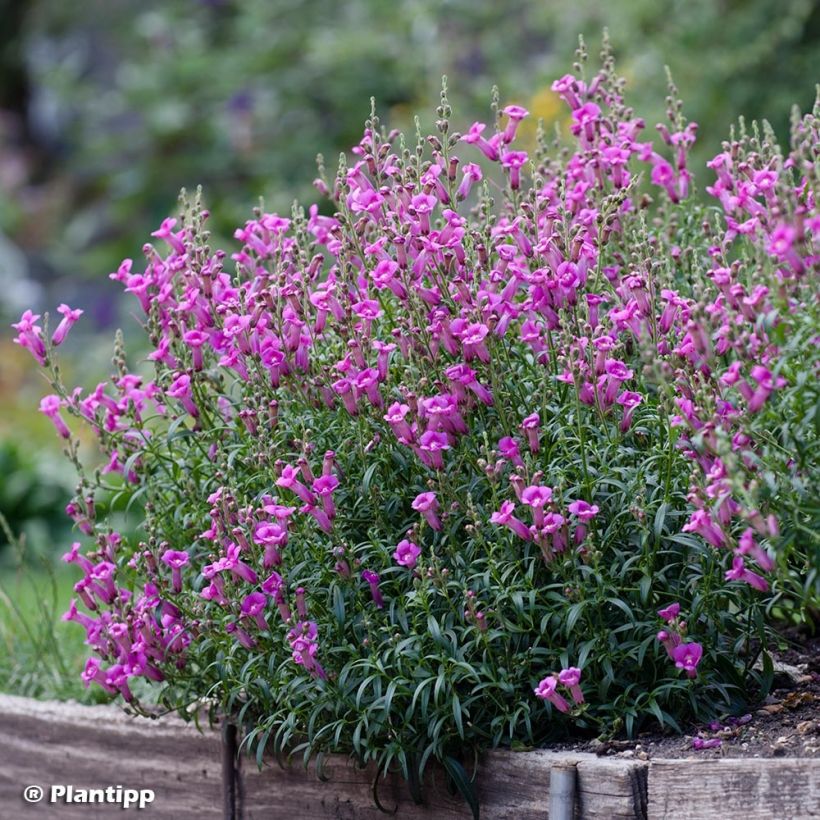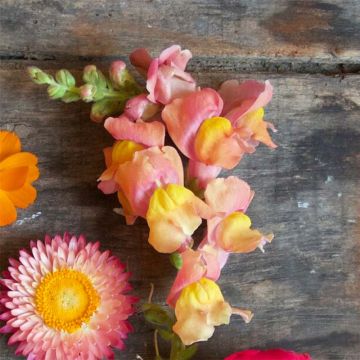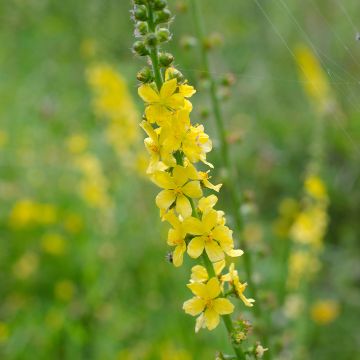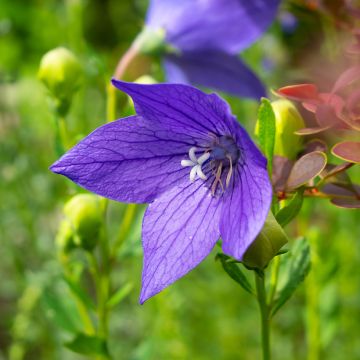

Antirrhinum majus Pretty in Pink


Antirrhinum majus Pretty in Pink


Antirrhinum majus Pretty in Pink


Antirrhinum majus Pretty in Pink


Antirrhinum majus Pretty in Pink


Antirrhinum majus Pretty in Pink


Antirrhinum majus Pretty in Pink
Antirrhinum majus Pretty in Pink
Antirrhinum x majus Pretty in Pink® 'Pmoore07'
Snapdragon
This item cannot be shipped to the selected country
Delivery charge from €5.90
Delivery charge from €5.90
More information
Schedule delivery date,
and select date in basket
This plant carries a 12 months recovery warranty
More information
We guarantee the quality of our plants for a full growing cycle, and will replace at our expense any plant that fails to recover under normal climatic and planting conditions.
From €5.90 for pickup delivery and €6.90 for home delivery
Express home delivery from €8.90.
From €5.90 for pickup delivery and €6.90 for home delivery
Express home delivery from €8.90.
Does this plant fit my garden?
Set up your Plantfit profile →
Description
The Antirrhinum majus 'Pretty in Pink' is a new variety of snapdragon that is particularly floriferous, adorned during a very long summer to autumn period with many delicate flower spikes, forming a cloud of lilac pink colour—a rather unusual shade for snapdragons, ideal in a country or romantic setting. In addition to its ornamental qualities, it is also a perennial plant in well-drained soil, resistant to diseases and water. Excellent in rock gardens, gravel beds, and borders, this relatively compact variety, like the Bowles' Mauve wallflower with which it forms a beautiful duo, also makes a great impact in a large container.
Known in gardens since 1583, the Antirrhinum majus was a privileged guest in monastery and priest gardens. This plant, from the Scrophulariaceae family, is native to the western Mediterranean basin, where it grows among rocks on arid slopes in the south of France. There are even plants rooted in the mortar of old walls protecting the gardens. Contrary to popular belief, wild snapdragon species, as well as certain varieties, are perfectly perennial if given poor, sandy, rocky soil in full sun, sheltered from cold winds.
The 'Pretty in Pink' cultivar is a recent British selection that won the Bronze Medal at the Garden Trials & Trade in 2018 in the Netherlands. It stands out for the abundance, size, elongated shape, and rare colour of its flowers. This bushy perennial, with a relatively short lifespan, forms a clump averaging 60 cm (24in) in height and 40 cm (16in) in width in the year following planting. Its upright, simple or branched stems are covered with opposite or alternate, lanceolate or lanceolate-linear, entire, glossy leaves of a beautiful, deep green colour. These leaves will remain on the plant if the winter is not too severe. The flowering period spans from May-June to September-October until the first frost. 'Pretty in Pink' produces solid spikes bearing large tubular flowers in a slightly mauve pink colour, opening to a small pale yellow to white base. They are very popular with bumblebees and butterflies. Snapdragons readily self-seed in the garden in light soil but are not always true to the parent plant.
Snapdragons are part of our childhood memories. With their velvety little snouts that emit a fragrance when you bury your nose in the flowers, they are plants accessible to all gardeners and easy to grow in borders, beds, or rock gardens. In cooler climates and heavy soil, treat them as annuals, which matters little considering their generosity. Large varieties like 'Pretty in Pink' are perfect for cut flowers, wild gardens, flowering pots, or cottage gardens. For example, pair them with love-in-a-mist, perennial flax, and valerians (Centranthus ruber). Their flower spikes are well highlighted when emerging among bushy perennials (fennel, cineraria maritima, aster cordifolius, lavender) or understory shrubs in subtle colours (ground cover roses, cotton lavenders, mugworts, euphorbias, Thymus hirsutus). To prolong their flowering, snapdragons should have their faded flowers regularly removed once the plant is established. The plant gets its vernacular name from the shape of its flowers, which resemble mouths when pinched.
Report an error about the product description
Antirrhinum majus Pretty in Pink in pictures






Flowering
Foliage
Plant habit
Botanical data
Antirrhinum
x majus
Pretty in Pink® 'Pmoore07'
Scrophulariaceae
Snapdragon
Cultivar or hybrid
Other Antirrhinum - Snapdragon
Planting and care
Snapdragons are lovely flowers that need fertile, well-drained soil with good tillage. They grow best in full sun but can also thrive in partial shade, especially in hot and sunny areas. Pretty in Pink snapdragons are not very hardy and can only withstand temperatures as low as -10°C (14°F). As a result, people usually grow them as annual or biennial plants. Although some Pretty in Pink snapdragons survive mild winters, they become more susceptible to rust. To keep them healthy and looking good, protect them from strong frosts in winter, improve soil drainage by adding gravel, and slightly elevate the planting. Cover the bases with a thick carpet of leaves or dry grass. This will help the plants come back in the spring and bloom earlier.
Planting period
Intended location
Care
-
, onOrder confirmed
Reply from on Promesse de fleurs
Summer flowering perennials
Haven't found what you were looking for?
Hardiness is the lowest winter temperature a plant can endure without suffering serious damage or even dying. However, hardiness is affected by location (a sheltered area, such as a patio), protection (winter cover) and soil type (hardiness is improved by well-drained soil).

Photo Sharing Terms & Conditions
In order to encourage gardeners to interact and share their experiences, Promesse de fleurs offers various media enabling content to be uploaded onto its Site - in particular via the ‘Photo sharing’ module.
The User agrees to refrain from:
- Posting any content that is illegal, prejudicial, insulting, racist, inciteful to hatred, revisionist, contrary to public decency, that infringes on privacy or on the privacy rights of third parties, in particular the publicity rights of persons and goods, intellectual property rights, or the right to privacy.
- Submitting content on behalf of a third party;
- Impersonate the identity of a third party and/or publish any personal information about a third party;
In general, the User undertakes to refrain from any unethical behaviour.
All Content (in particular text, comments, files, images, photos, videos, creative works, etc.), which may be subject to property or intellectual property rights, image or other private rights, shall remain the property of the User, subject to the limited rights granted by the terms of the licence granted by Promesse de fleurs as stated below. Users are at liberty to publish or not to publish such Content on the Site, notably via the ‘Photo Sharing’ facility, and accept that this Content shall be made public and freely accessible, notably on the Internet.
Users further acknowledge, undertake to have ,and guarantee that they hold all necessary rights and permissions to publish such material on the Site, in particular with regard to the legislation in force pertaining to any privacy, property, intellectual property, image, or contractual rights, or rights of any other nature. By publishing such Content on the Site, Users acknowledge accepting full liability as publishers of the Content within the meaning of the law, and grant Promesse de fleurs, free of charge, an inclusive, worldwide licence for the said Content for the entire duration of its publication, including all reproduction, representation, up/downloading, displaying, performing, transmission, and storage rights.
Users also grant permission for their name to be linked to the Content and accept that this link may not always be made available.
By engaging in posting material, Users consent to their Content becoming automatically accessible on the Internet, in particular on other sites and/or blogs and/or web pages of the Promesse de fleurs site, including in particular social pages and the Promesse de fleurs catalogue.
Users may secure the removal of entrusted content free of charge by issuing a simple request via our contact form.
The flowering period indicated on our website applies to countries and regions located in USDA zone 8 (France, the United Kingdom, Ireland, the Netherlands, etc.)
It will vary according to where you live:
- In zones 9 to 10 (Italy, Spain, Greece, etc.), flowering will occur about 2 to 4 weeks earlier.
- In zones 6 to 7 (Germany, Poland, Slovenia, and lower mountainous regions), flowering will be delayed by 2 to 3 weeks.
- In zone 5 (Central Europe, Scandinavia), blooming will be delayed by 3 to 5 weeks.
In temperate climates, pruning of spring-flowering shrubs (forsythia, spireas, etc.) should be done just after flowering.
Pruning of summer-flowering shrubs (Indian Lilac, Perovskia, etc.) can be done in winter or spring.
In cold regions as well as with frost-sensitive plants, avoid pruning too early when severe frosts may still occur.
The planting period indicated on our website applies to countries and regions located in USDA zone 8 (France, United Kingdom, Ireland, Netherlands).
It will vary according to where you live:
- In Mediterranean zones (Marseille, Madrid, Milan, etc.), autumn and winter are the best planting periods.
- In continental zones (Strasbourg, Munich, Vienna, etc.), delay planting by 2 to 3 weeks in spring and bring it forward by 2 to 4 weeks in autumn.
- In mountainous regions (the Alps, Pyrenees, Carpathians, etc.), it is best to plant in late spring (May-June) or late summer (August-September).
The harvesting period indicated on our website applies to countries and regions in USDA zone 8 (France, England, Ireland, the Netherlands).
In colder areas (Scandinavia, Poland, Austria...) fruit and vegetable harvests are likely to be delayed by 3-4 weeks.
In warmer areas (Italy, Spain, Greece, etc.), harvesting will probably take place earlier, depending on weather conditions.
The sowing periods indicated on our website apply to countries and regions within USDA Zone 8 (France, UK, Ireland, Netherlands).
In colder areas (Scandinavia, Poland, Austria...), delay any outdoor sowing by 3-4 weeks, or sow under glass.
In warmer climes (Italy, Spain, Greece, etc.), bring outdoor sowing forward by a few weeks.
























































